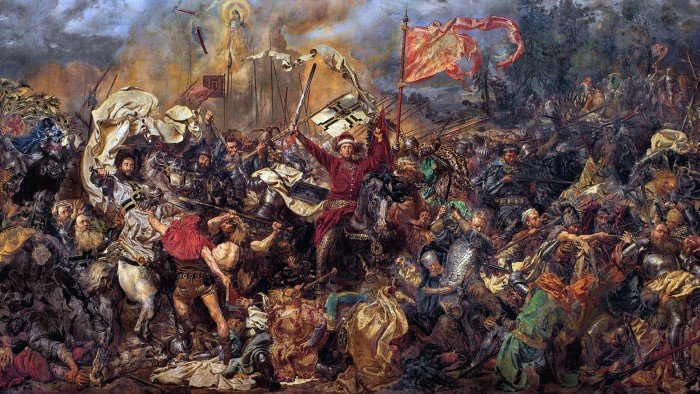Stay informed with free updates
Simply sign up to the War in Ukraine myFT Digest — delivered directly to your inbox.
Poland’s culture ministry is readying plans to transfer the country’s most treasured artworks abroad in the event of a Russian invasion.
In an interview with the Financial Times, culture minister Hanna Wróblewska said evacuation planning was needed because Poland’s nearly 1,000 museums could no longer operate under “a theoretical notion of security” as long as Russia continues to wage war in neighbouring Ukraine.
She said her ministry was in talks with authorities abroad about hosting evacuated artworks from some 160 institutions run by the Polish state. In addition to paintings and sculptures, rare books and musical instruments would also be part of the evacuation effort — with private museums and galleries also expected to follow suit.
The plan, which should be finalised by the end of the year, is part of a broader security push by Prime Minister Donald Tusk’s government, which includes reinforcing border protection and doubling the size of the Polish armed forces to 500,000 troops.
Poland is already the biggest defence spender in Nato on a proportional basis, allocating 4.7 per cent of its GDP to military expenditure this year.
The art initiative is being overseen by Maciej Matysiak, a former army colonel who was deputy head of Poland’s military counter-intelligence agency. He now leads a department of security and crisis management with a staff of 40 people that was set up within the culture ministry.
“We needed a person who worked in the army, in defence but also knows about crisis management,” Wróblewska said.

The plan draws in part on lessons learned from assisting Ukraine in relocating cultural artefacts to Poland after Russia’s full-scale invasion in 2022. Some of those Ukrainian works are still being safeguarded in Poland, the minister said.
Co-operating with Ukraine’s art experts meant that “they were telling us their own story, how it is to work in such a crisis for real”, Wróblewska said.
Beyond logistics, the effort also includes updating documentation to ensure that relocated Polish artworks can be tracked and reclaimed in future. “You need to evacuate also all the inventory books that can then allow you to say that this is your work,” said Wróblewska.
In a separate effort, Poland continues to pursue the restitution of artworks looted during the second world war, which started when Poland was invaded by Nazi Germany and then the Soviet Union.
Some 20 pieces are returned to Poland each year from Germany, the US and other countries, but “a lot” must still be recovered, the minister said.
Despite being under Nazi and Soviet occupation, Polish authorities managed to safeguard some flagship cultural assets. These included a monumental painting, “The Battle of Grunwald”, which was transported from Warsaw to the eastern city of Lublin and kept hidden throughout the war, even though Nazi propaganda chief Joseph Goebbels offered a big reward for information on its whereabouts.
Wartime evacuation planning was discussed at an informal meeting of EU culture ministers in Warsaw in April. Wróblewska said the Baltic states, also on Nato’s eastern flank, shared her government’s thinking about relocating artworks. “They are a little bit smaller, so everything is a little bit easier for them — they don’t have to co-ordinate so many people, so many museums,” she said.
Still, each museum faces the challenge set by Poland’s culture ministry of determining which artworks should qualify for its “priority evacuation” category.
“It is not possible to evacuate everything,” Wróblewska said.




No Comment! Be the first one.